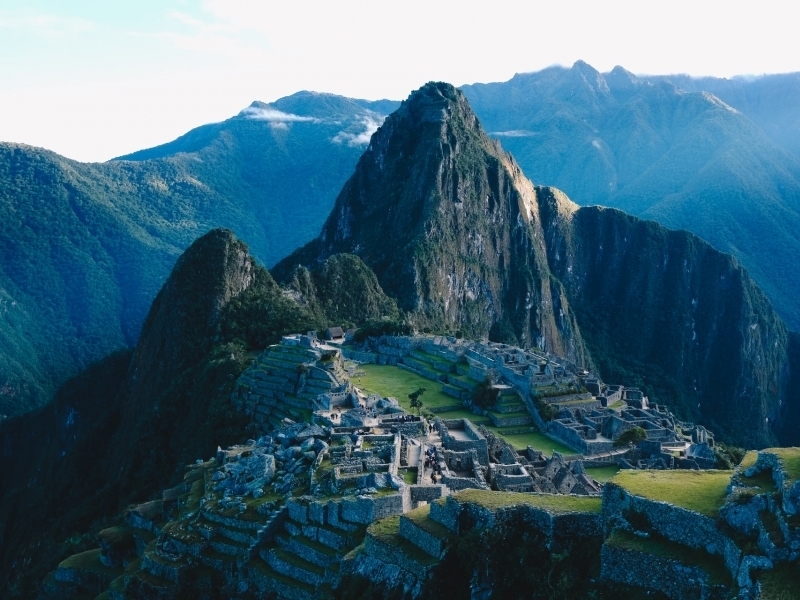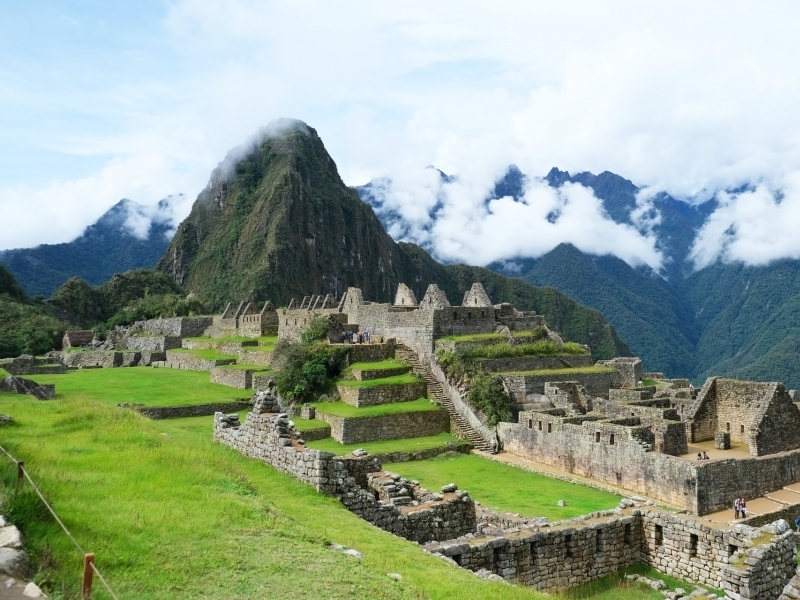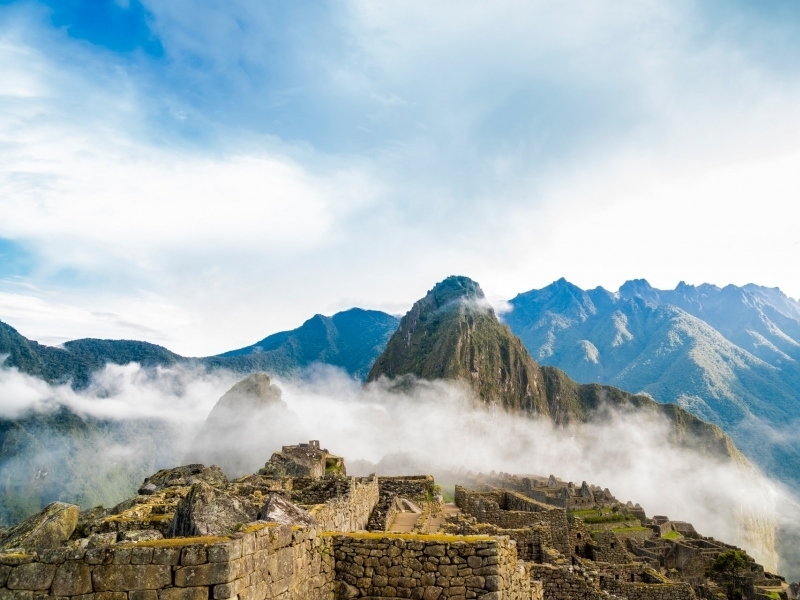News and Testimonials

Discover 10 secrets of Machu Picchu
This ancient Inca site has centuries-old secrets trapped in its walls.
Nestled high in the slopes of the Andes, the ruins of Machu Picchu continue to reveal the mysteries of the Inca Empire. While the archaeological site draws scores of visitors to Peru annually, here are 10 lesser known secrets hidden beneath its layers of history.
It’s not actually the Lost City of the Inca.
When the explorer Hiram Bingham III encountered Machu Picchu in 1911, he was looking for a different city, known as Vilcabamba. This was a hidden capital to which the Inca had escaped after the Spanish conquistadors arrived in 1532. Over time it became famous as the legendary Lost City of the Inca. Bingham spent most of his life arguing that Machu Picchu and Vilcabamba were one and the same, a theory that wasn’t proved wrong until after his death in 1956. (The real Vilcabamba is now believed to have been built in the jungle about 50 miles west of Machu Picchu.) Recent research has cast doubt on whether Machu Picchu had ever been forgotten at all. When Bingham arrived, three families of farmers were living at the site.
It’s no stranger to earthquakes.
The stones in the most handsome buildings throughout the Inca Empire used no mortar. These stones were cut so precisely, and wedged so closely together, that a credit card cannot be inserted between them. Aside from the obvious aesthetic benefits of this building style, there are engineering advantages. Peru is a seismically unstable country—both Lima and Cusco have been leveled by earthquakes—and Machu Picchu itself was constructed atop two fault lines. When an earthquake occurs, the stones in an Inca building are said to “dance;” that is, they bounce through the tremors and then fall back into place. Without this building method, many of the best known buildings at Machu Picchu would have collapsed long ago.
Much of the most impressive stuff is invisible.
While the Inca are best remembered for their beautiful walls, their civil engineering projects were incredibly advanced as well. (Especially, as is often noted, for a culture that used no draft animals, iron tools, or wheels.) The site we see today had to be sculpted out of a notch between two small peaks by moving stone and earth to create a relatively flat space. The engineer Kenneth Wright has estimated that 60 percent of the construction done at Machu Picchu was underground. Much of that consists of deep building foundations and crushed rock used as drainage. (As anyone who’s visited in the wet season can tell you, Machu Picchu receives a lot of rain.)
You can walk up to the ruins.
A trip to Machu Picchu is many things, but cheap is not one of them. Train tickets from Cusco can run more than a hundred dollars each, and entry fees range from $47 to $62 depending on which options you choose. In between, a round-trip bus trip up and down the 2,000-feet-high slope atop which the Inca ruins are located costs another $24. If you don’t mind a workout, however, you can walk up and down for free. The steep path roughly follows Hiram Bingham’s 1911 route and offers extraordinary views of the Machu Picchu Historical Sanctuary, which looks almost as it did in Bingham’s time. The climb is strenuous and takes about 90 minutes.
There’s a great, hidden museum that no one goes to.
For visitors conditioned to the explanatory signs at national parks, one of the strangest things about Machu Picchu is that the site provides virtually no information about the ruins. (This lack does have one advantage—the ruins remain uncluttered.) The excellent Museo de Sitio Manuel Chávez Ballón ($7 entry) fills in many of the blanks about how and why Machu Picchu was built (displays are in English and Spanish), and why the Inca chose such an extraordinary natural location for the citadel. First you have to find the museum, though. It’s inconveniently tucked at the end of a long dirt road near the base of Machu Picchu, about a 30-minute walk from the town of Aguas Calientes.
There’s more than one peak to climb.
Long before dawn, visitors eagerly queue up outside the bus depot in Aguas Calientes, hoping to be one of the first persons to enter the site. Why? Because only 400 people are permitted to climb Huayna Picchu daily (the small green peak, shaped like a rhino horn, that appears in the background of many photos of Machu Picchu.) Almost no one bothers to ascend the pinnacle that anchors the opposite end of the site, which is usually called Machu Picchu Mountain. At 1,640 feet it is twice as tall, and the views it offers of the area surrounding the ruins—especially the white Urubamba River winding around Machu Picchu like a coiled snake—are spectacular.
There’s a secret temple.
Should you be one of the lucky early birds who snags a spot on the guest list to Huayna Picchu, don’t just climb the mountain, snap a few photos, and leave. Take the time to follow the hair-raising trail to the Temple of the Moon, located on the far side of Huayna Picchu. Here, a ceremonial shrine of sorts has been built into a cave lined with exquisite stonework and niches that were once probably used to hold mummies.
There are still things to be found.
Should you wander away from the central ruins at Machu Picchu, you’ll notice that occasionally side paths branch off into the thick foliage. Where do they go? Who knows. Because the cloud forest grows over quickly in the area surrounding Machu Picchu, there may be unknown trails and ruins yet to be found nearby. Several newly refurbished sets of terraces were made available to the public for the first time in 2011.
It has a great sense of direction.
From the moment Hiram Bingham staggered up to Machu Picchu in 1911, visitors have understood that the ruins’ natural setting is as important to the site as the buildings themselves. Recent research has shown that the site’s location, and the orientation of its most important structures, was strongly influenced by the location of nearby holy mountains, or apus. An arrow-shaped stone atop the peak of Huayna Picchu appears to point due south, directly through the famous Intihuatana Stone, to Mount Salcantay, one of the most revered apus in Inca cosmology. On important days of the Inca calendar, the sun can be seen to rise or set behind other significant peaks.
It may have been the end of a pilgrimage.
A new theory proposed by the Italian archaeoastronomer Giulio Magli suggests that the journey to Machu Picchu from Cusco could have served a ceremonial purpose: echoing the celestial journey that, according to legend, the first Inca took when they departed the Island of the Sun in Lake Titicaca. Rather than simply following a more sensible path along the banks of the Urubamba River, the Inca built the impractical but visually stunning Inca Trail, which according to Magli, prepared pilgrims for entry into Machu Picchu. The final leg of the pilgrimage would have concluded with climbing the steps to the Intihuatana Stone, the highest spot in the main ruins.










